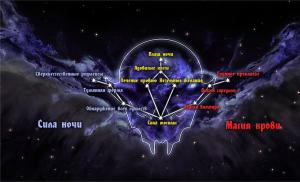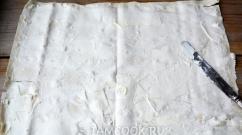Why do balls hang on high-voltage lines? Aviation marker balls for marking high voltage wires
Most often in open areas, such as far from cities, you may notice large red balls placed on the electrical wires of high-voltage power lines. These balls are usually found in places where there are actually not many other different objects. In fact, this is a kind of warning that power lines pass in this area.
The large red balloons that hang on power lines in rural areas are primarily intended to help airline pilots spot the lines in order to avoid colliding with them. Balls are often found on power lines surrounding small airports in open areas and are envisioned when architectural design of homes in the area is underway. Airports in cities do not often need these markers because power lines are far from airports and pilots can more easily see the runway and any obstacles that stand in their way.
When there is a small local airport in a rural area, these pilot balloons help guide pilots when they are about to land on the runway. In other places where you can see these balls, there are power lines that cross rivers, canyons, or ravines. In these locations, the poles are far apart, and power lines can be difficult to distinguish from other objects and the landscape.
In addition to being used at airports, such balloons are used in other areas where aircraft can occur frequently. For example, many hospitals have a helipad for the speedy delivery of patients. Since a hospital does not host the same as a large airport, balloons can be installed on power lines near the hospital to help pilots spot the hospital in time. If there are areas where emergency medical evacuation is common, balloons can be used on lines in those areas as well.
It is often the red balls that are used as warning indicator balls. While red is one of the most common colors for warning and hazard reporting tasks, other colors are available. The color used is determined mainly by the surrounding landscape, and the color that stands out the most is applied. Many of these balls are red, white, or orange. In many cases, you will see a combination of white and a different color for better visibility. The variable colors help draw pilots' attention to the wires and change the course of an airplane or other aircraft in time.
site
& nbsp & nbsp & nbspThank you for your interest in the information project site.
& nbsp & nbsp & nbsp
& nbsp & nbsp & nbspYou can support our project by donating any amount for its development.
For many, this question has remained a mystery for many years. There are many assumptions and guesses.
Scarecrow for birds. Small ones are placed inside a large ball. The moment the bird sits on the wire, it vibrates, and the balls, like rattles, emit a frightening sound. The birds fly away.
Electricians' stashes for storing stashes. Each electrician has his own. A personal safe, so to speak, protected by high voltage. Lightning transformer. Lightning strikes the ball and turns into electricity. In winter, such a transformer greatly facilitates the operation of power plants.
On sunny summer days, the wire heats up and stretches under its own weight. The balls contain a high-tech device that regulates the wire tension.
The ball is an anchor. Suppresses swaying wires in windy weather. This protects the line from short circuits.
A ball is a connection. Used to connect two pieces of cable.
Smiled? And all these versions were voiced by "experts" who wanted to show off their knowledge.
In fact, everything is much simpler: these are wire markers. They come in different sizes, usually red or orange. Used to make the wire visible. Installed near roads, fields, water bodies and airports.
These marker balloons allow birds and small aircraft pilots (low-flying aircraft and helicopters) to spot wires at a safe distance and avoid colliding with them.

Photo -
LLC PK Aston-Elektrotekhnika is a leading Russian manufacturer of air defense balloons that meet the requirements of STO JSC FGC UES 56947007-29.240.55.192-2014 "Standards for technological design of overhead power transmission lines with a voltage of 35-750 kV" and ICAO, "Appendix 14 . Airfields. Volume 1. Design and operation of aerodromes ", 4th edition, July 2014. and GOST R 51177-98 “Linear fittings. General technical conditions ".
Advanced technologies implemented in the design and manufacture of pilot warning systems allow achieving maximum efficiency both in terms of visual information content and in terms of manufacturability during installation and operation.
The unique development of aviation markers of the Russian manufacturer is the result of the creative efforts of engineers and technical specialists of PC Aston-Elektrotekhnika LLC, the practical implementation of the implementation of import substitution programs.

Description
Aviation marker balls are used to mark high-voltage wires in order to visually warn civil and military pilots about the presence of power lines, in particular, passing through water obstacles and gorges. Aircraft barrage balloons for overhead lines are clearly visible against the background of any terrain.
The marker ball is made of fiberglass-reinforced plastic and coated with a special composition that protects against ultraviolet radiation and fading.
Aviation markers for power lines are available in white, red and orange. Defensive balloons are positioned on the highest wire (rope) of the overhead line and are installed in an alternating color scheme of white and red or white and orange balls for the best visibility.
Advantages
Glass fiber-reinforced plastic is a high-strength material that is resistant to various weather conditions and temperature extremes. Climatic version corresponds to UHL1.
The fastening clamps are made of corrosion-resistant material.
Wire clamp sizes are suitable for power lines and cables of all existing diameters.
Water drain holes prevent condensation from accumulating inside the balls.
The design features of the components reduce the cost of transporting disassembled balls.
A specially designed spiral protector, on which the ball is installed, provides protection and safety of the wire (rope).
Markers are maintenance-free throughout their entire service life.
Application
Cable-stayed cables supporting guyed masts.
Trunk overhead lines.
Distribution networks.
Since November 1, 2010, G-class flights of small aircraft are allowed in Russia, which do not require a permit, you only need to notify the air traffic control authorities. The upper limit for class G airspace depends on the region and varies from 300 m (Rostov Oblast) to 4500 m (federal subjects located in the eastern part of Siberia). Due to the low altitude of flights and the lack of air traffic control clearance, it becomes necessary to mark air communication lines and power lines in the flight zones of small aircraft. The recommendation for such marking is included in the standard of PJSC Rosseti STO 34.01-21.1-001-2017 “Distribution electrical networks with a voltage of 0.4-110 kV. Requirements for technological design ". A distinction is made between daytime marking (the marker does not glow, but only reflects light) and light shielding (the marker itself emits light). In this article, we will only talk about daytime marking. The devices intended for it are called "signal balls-markers" and are designated by the abbreviation SSM.
PJSC Rosseti standard STO 34.01-2.2-016-2016 “Markers for overhead power transmission lines. Marking of supports and spans of overhead lines "establishes the following requirements for marking power lines with a voltage of 35 kV and above, passing near the runways: a horizontal, conical or transitional surface, take-off surface or approach surface within 6000 m of their inner boundaries. " Also, regardless of the location relative to the aerodrome, day markings (coloring), SSHM and light barriers must have overhead line supports with a height of 100 m or more.

SSM and light barriers on power lines with a voltage of 35 kV and above should also be, regardless of the location of the line relative to the airfield, at crossings over lakes and navigable rivers, as well as at the intersection of highways IA, IB, IB. In this case, the SSM and the light barrier are installed not only on the lightning protection, but also on the phase wires (if there are several of these wires and they are located in the same plane, only the extreme wires are marked). In some cases, it is allowed to install only SSHM without light shielding, these options are listed in STO 34.01-2.2-016-2016. For example, it is quite possible to dispense with only SSHM, if in a given area from small aircraft only planes that carry out aerial chemical work in agriculture are known to fly, because such work is carried out during daylight hours. Also, the specified standard describes the principles of placing SSM on wires.
SSM can be white, red and orange. In the event that there is more than one wire at the highest level in the power transmission line, an alternation of markers of two colors is used - red and white or red and orange. The choice between red and orange is made based on which of the indicated colors will be most noticeable against the background of the surrounding landscape. According to the current Russian regulations, SSM used in the flight zone of small aircraft, when crossing roads and water obstacles, must have a single color. Nevertheless, on sale you can also find SSM, painted in two colors, as a rule, this is a combination of white and red or white and orange. In Russia, such markers are used where small aircraft do not fly, but there is a massive migration of birds. The bright two-tone markers scare birds away by preventing them from colliding with wires.

At first glance, what could be simpler - a ball painted in a certain color and equipped with attachments to the wire? But in fact, SSM is a real product of high technologies!
To begin with, the SSHM must combine strength, light weight and resistance to rain. In this case, the SSM is necessarily made of a dielectric metal, otherwise the capacitance between the conductor and the ground will increase. To prevent cracking and fading, the ball is covered with a special compound that protects the plastic from ultraviolet rays, or additives are used to the material that protect against ultraviolet radiation.
The material from which the fasteners are made should not cause electrochemical corrosion in contact with the wire on which it is installed. Recall that in modern overhead power lines, wires are used made of aluminum, or of aluminum and steel: inside there is a steel cable braided with aluminum wire. Accordingly, electrochemical corrosion should not occur when the fasteners come into contact with aluminum.

Does the SMM have to be completely sealed? It turns out not. During the operation of SSM, the ambient temperature changes over a wide range. When the temperature drops, the air is compressed, and moisture is sucked in through small cracks or leaks. Moisture accumulates on the bottom of the ball, which is practically not removed from there. The mass of the marker increases, which can lead to stretching or even breakage of the wires. In the event of frost, the formed ice can deform the marker. That is why at least two drainage holes should be provided in the SSM.
And, of course, the SSM should fulfill its main function, namely, to be clearly visible from afar. The ball must be visible at a distance of at least 1000 m in the air and 300 m from the ground.
The listed requirements are fully met, for example,. These markers can be used on overhead lines and power lines with voltages from 35 kV to 1000 kV. The observation range is not less than 1200 m. They are produced in two versions - with a diameter of 600 mm and 800 mm. Due to the use of fiberglass-reinforced polyester as the material for the body, the ball weights are 6.9 and 9.0 kg, respectively. A wall thickness of 3 mm is sufficient for the material used to provide the required strength. But, if the SSHM is planned to be used in difficult conditions, the strength of the marker can be increased by installing special reinforcing rods in it (purchased additionally).

Signal balls-markers RedDot OMARK in different colors
The following color options are available: orange, red, white, orange-white, red-white. Optionally, you can install a reflective tape on the SSHM.
Separately, it should be noted the cable clamp, the design of which ensures reliable fixation on the wire. The clamp is made of aluminum alloy, but the bolts, washers and nuts are made of stainless steel, as they do not come into contact with the wire and do not pose a threat of corrosion to it. This model of SShM can be mounted on wires with a diameter of 6.5 to 55 mm. Such a wide range of wire diameters is an important advantage of RedDot OMARK - the closest competitor has almost half the width of this range. What practical implications is this? If your company builds or maintains power lines with a variety of types, you do not need to purchase SSM for various diameters, it is enough to have only one model in stock, which can be installed on almost any wires that are massively used on power lines.
The storage and transport problem is also simplified by the special design of the marker. When disassembled, the markers are compactly folded into one another, saving space in the warehouse, as well as reducing the required number of truck trips for delivery.
I still did not understand what kind of balls are strung on the wires of the power transmission line in the place where the power transmission line crosses the highways? Who knows?
I saw such things all the time, and in those places where power lines intersect the road, there is no right and left.
Definitely not elements of road infrastructure: flow sensors, cameras, etc., they are located on special poles, not wires.
In general, I am still tormented by the question. Help!
Quote:
Well, you have found a landmark :)) I will try to photograph them for you, Mikhail, if I don’t forget :)
2Nini,
Yes, exactly red or orange balls. If this is for airplane / helicopter pilots, then why are they strung in the places where the wires cross the road. In other places, there is nothing on the wires. That is, they hang strictly in the span of wires that is above the road. In my opinion, landing a helicopter on a highway is illogical if there is a field nearby.
Elena's version seems more logical to me that these are isolators, although I'm not sure.
Quote:
maybe so, but once on the autobahn we got into a "dead and hopeless" traffic jam due to an accident that happened about a kilometer and a half from us. So I myself saw a helicopter descending onto the track with rescuers who quickly, if you can call it that, loaded the especially seriously wounded in order to take them to the hospital. Probably, for such emergencies, these balls hang.
I will also express my humble opinion :)
Power line balloons are a preventive measure against corona discharges that interfere with radio signals (radio, mobile communications, ...) passing vehicles under these lines. In fact, these balls are hung not only and not so much over the roads, since coronary discharges, in addition to the usual communication interference, also lead to a loss of electricity. Apparently, in the Czech Republic, the priority is precisely communication.
How many, however, are we, power engineers ...
Colleagues saw in the Czech Republic, I recently in Italy.
They also asked questions to people from science. Initially, there were assumptions that these are meteorological sensors, necessary, including when melting ice. But their number does not fit into this assumption! So the question is open! :-)
perhaps these are multifunctional "devices" :-))) by the way, if these are markers for vehicles, then not for flying (too low), but just for those traveling on the highway, oversized vehicles such as containers, cranes, etc. where there is a height adjustment. Well, the interference factor is also not swept away. We have seen such balls in Italy and in Spain wherever power lines intersect the highway and in Germany.













